
Original Link: https://www.anandtech.com/show/2701
CES 2009 - ASUS Expands the Eee Family
by Jarred Walton on January 7, 2009 12:00 AM EST- Posted in
- Trade Shows
CES does not officially open its doors until Thursday, but already many people are in Las Vegas, and the meetings have begun. One area where we've already noticed a difference from previous years is in the availability of hotel rooms. Yes, the economic slump is rearing its ugly head once again, and several people we've talked to commented on the availability of rooms in downtown Las Vegas, even in late December. Not only are the rooms available, but pricing on hotel suites is down anywhere from 20% to 50% compared to previous years! Not that we're complaining about the prices, but it will be interesting to see how much of an impact the economy has had on the show itself.
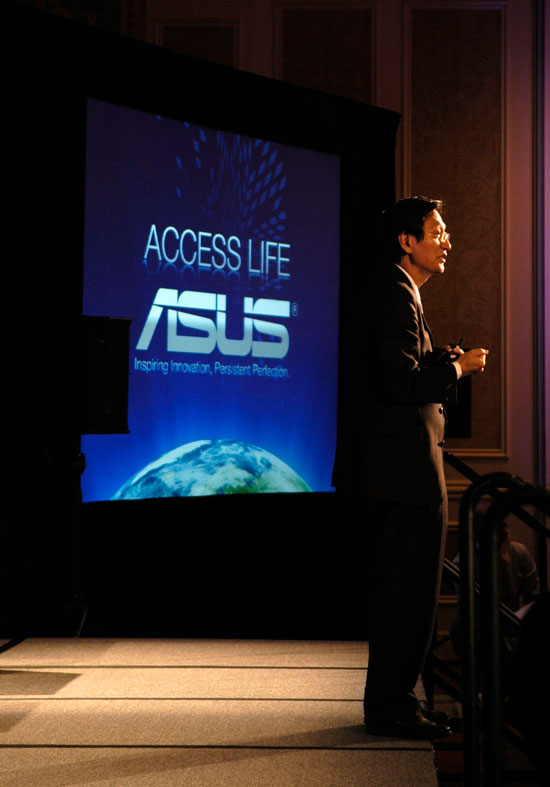
Several of us from AnandTech arrived on Tuesday, in time for the ASUS press conference. There is no doubt that ASUS has seen a lot of success with the Eee brand over the past year (Eee stands for Excellent, Exciting, Easy -- or Easy to Learn, Easy to Work and Easy to Play depending on which slide you're looking at), and with success comes repetition. The Eee PC and netbooks in general are new and interesting, true, and there are plenty of uses for such devices. However, we do like to see innovations in other areas of the industry. Certainly ASUS isn't focusing solely on Eee brand hardware, but you might be forgiven for thinking otherwise after the media event.
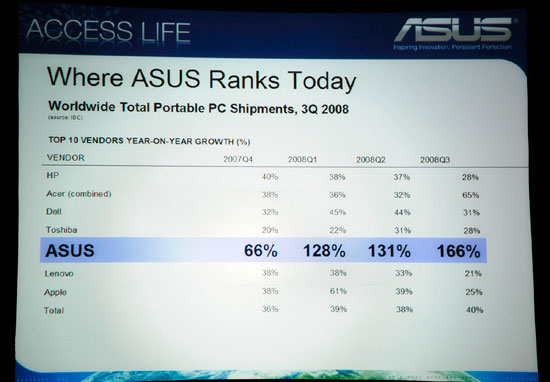
With over $22B in sales for 2007, ASUS is huge. Around 40% of all desktop motherboards shipped worldwide come from ASUS. But growth in the mobile space is just ridiculous thanks to ASUS’ Eee line of netbooks. Total ASUS mobile shipments increased 166% in Q3 2008 compared to Q3 2007 thanks to the Eee line. The 40 minute presentation by ASUS chairman Jonney Shih introduced several new concepts for the Eee Family. Most of the changes seem to focus on adding more features and options into various netbooks.
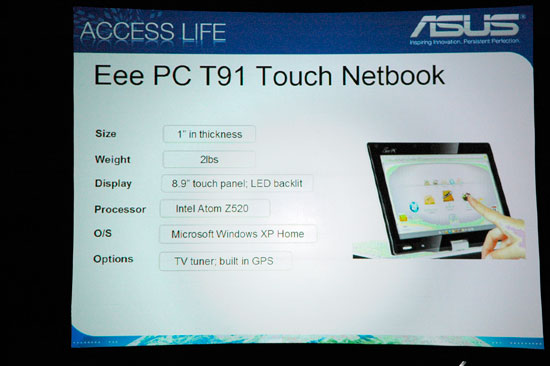
The Eee PC T91 and T101H were both introduced (8.9" and 10.2" chassis, respectively), with one of the major additions being a touch sensitive interface. These models also feature a tablet PC display, so you can rotate it in fold flat against the keyboard if you prefer. ASUS provided some demos of new interface ideas, but if you've ever seen a tablet PC you have a good idea of what to expect -- only in a netbook rather than a tablet PC. Pricing on these devices on the other hand will be very interesting, considering tablet PCs have formerly cost significantly more than competing ultraportables. The new touchscreen devices in the Eee Family will also support multi-touch, which could open the doors for some innovative ideas.
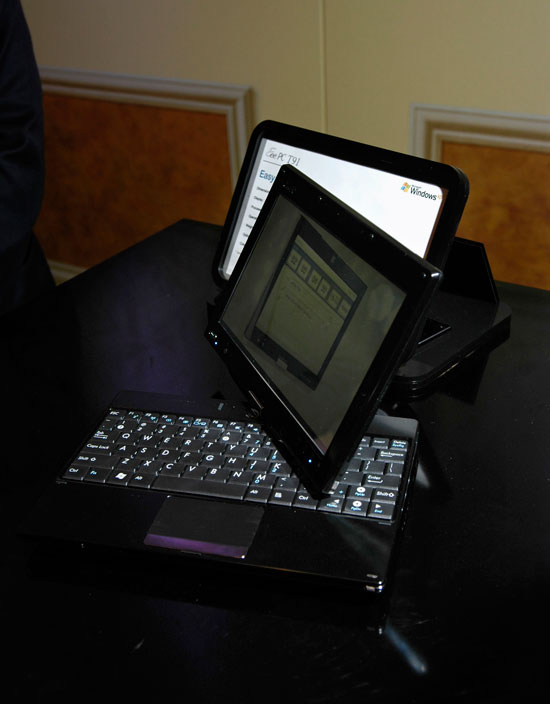
The T91
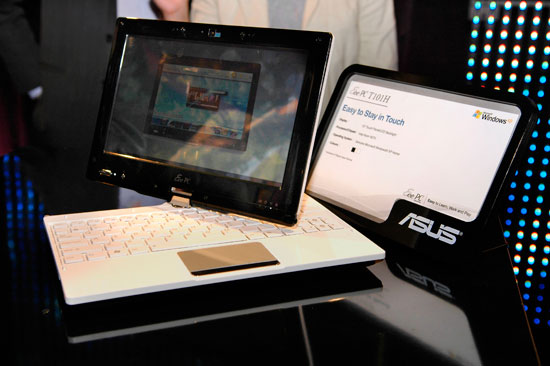
The T101H
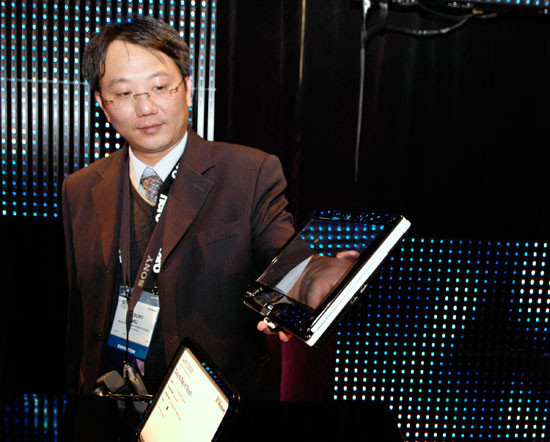
The T101H in tablet mode
An optional TV Tuner and GPS will be available for the Eee PC touch models.
The Eee Top was next up, and it adds a new all-in-one device to the Eee Family.
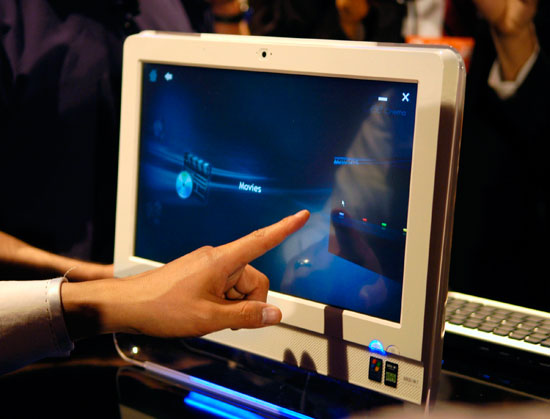
Again, it has a touch sensitive interface, so you end up with something like an Eee iMac. ASUS says the Eee Top will be a useful tool for collaborative learning, with an intuitive interface that's easy to navigate. Central to this is a "touch to communicate" experience, but we will have to wait until we get some real hands-on time with the device before we can say what any of the above actually means in practice. (You gotta love the marketing speak, right?)
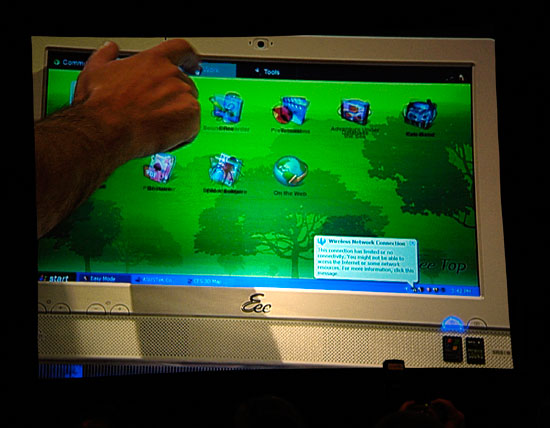
I must admit, the combination of touch and a hopefully affordable Eee Top is pretty desirable. The machine worked like a poor man’s HP TouchSmart would, but is good since that’s exactly what it’d be.
The final addition to the Eee Family shown at the event is the Eee Keyboard.
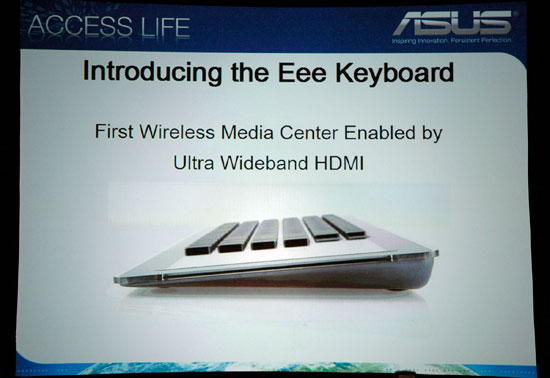
The Eee Keyboard looks like a full sized keyboard (reminiscent of Apple’s aluminum keyboard) but with two major differences: an integrated PC and an integrated 5” touchscreen display. I wrote about such a device in one of my blogs at WePC.com, take the numeric keypad away from a standard keyboard and replace it with a touchscreen/touchpad and that’s what you get with the Eee Keyboard.
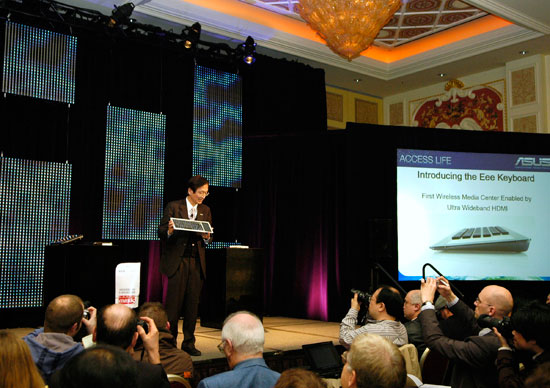
The integrated PC (no word on specs, presumably very Eee-like?) allows the keyboard itself to be all you need for a computer, assuming you have a display nearby. The display part of the equation is pretty sexy, the Eee Keyboard has an integrated Ultra Wideband HDMI transmitter - if you’ve got a display with a UWB HDMI receiver, all you’ll need is this keyboard and you’re good to go, no cables required. There’s a standard HDMI port on the keyboard as well. As soon as you say wireless, however, battery life becomes something to discuss, and at present we have no idea what sort of battery life that Eee Keyboard will offer. We're unsure about whether or not an optical drive is part of the keyboard, but it does present some intriguing ideas.
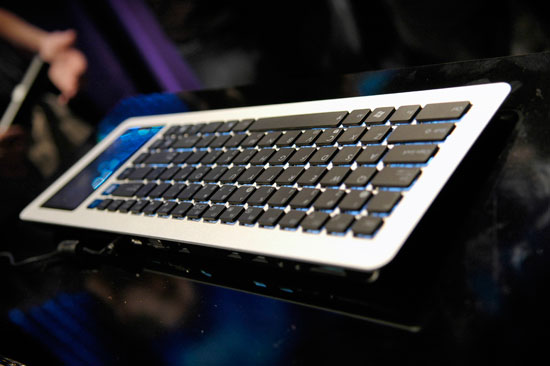
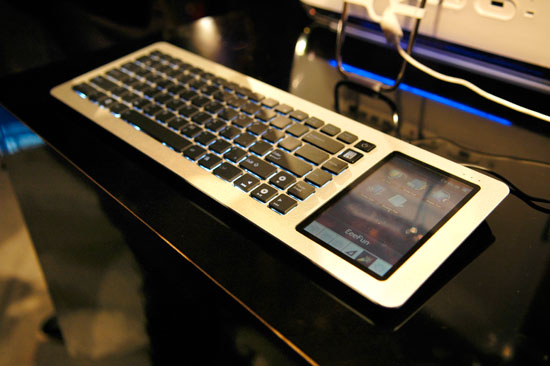
The touch screen can function as either a screen for the integrated PC or as a trackpad for whatever machine you have the Eee Keyboard hooked up to. A large, glass trackpad on a keyboard seems like the ideal way to bring multi-touch to the desktop.
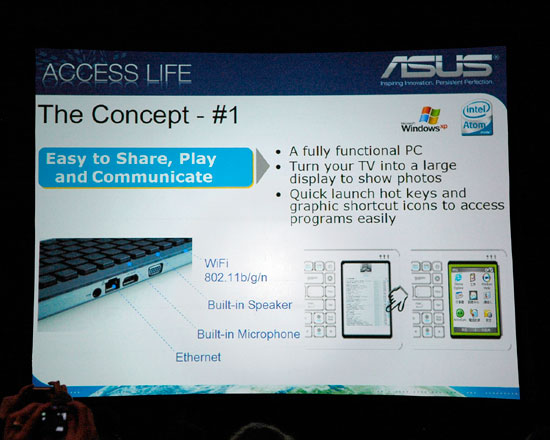
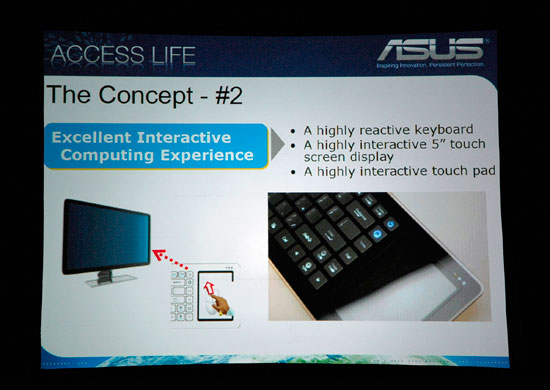
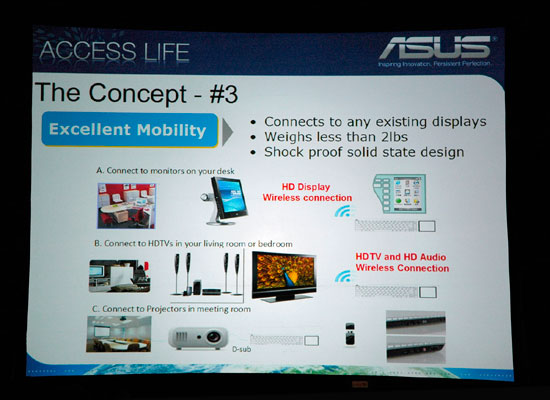
Microsoft was on-hand to not only pledge support for ASUS, but also demonstrate Windows 7 running on an Eee PC with 1GB of memory.
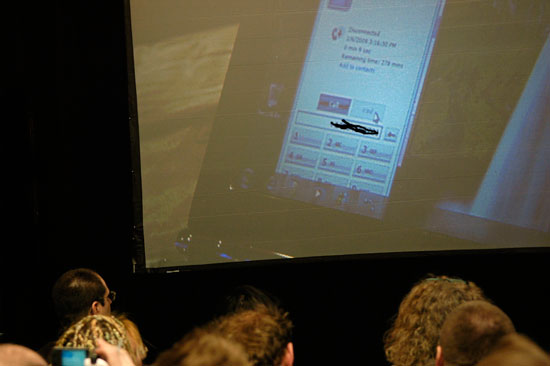
The demo ran quickly, it was a simple Windows Live Messenger test, but the OS seemed quick at least. The Microsoft rep also demonstrated Windows 7’s fast sleep and resume times. Putting the Eee PC to sleep happened instantaneously, but waking it up took noticeably longer. Without a side by side comparison to Vista I couldn’t tell if Windows 7 was any faster in resume time, but it’s nice to see Microsoft taking memory and CPU power constrained systems into account when looking at Windows 7 performance.
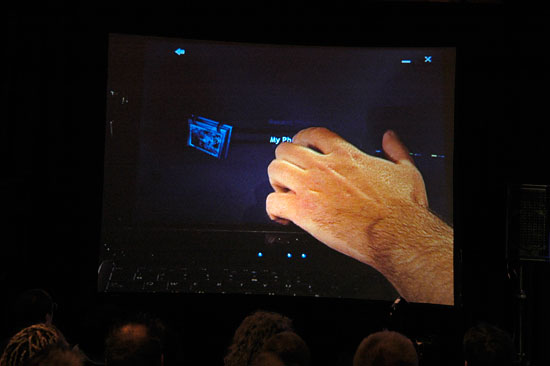
This demo took a while to complete, tapping on My Photos was more complicated than it sounds (or should be). It was running Windows 7 at least.
Besides the above devices that were in prototype or near final form (depending on the device), ASUS also had a few presentations showing computing concepts. One of these was for an ultrathin "origami inspired" laptop of sorts, which might even be able to give the MacBook Air a run for the money when it comes to "thin" computing.
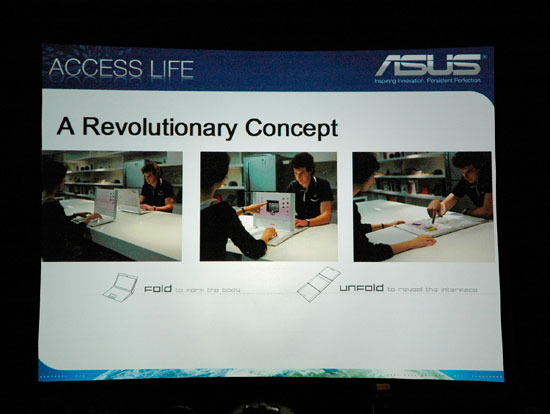
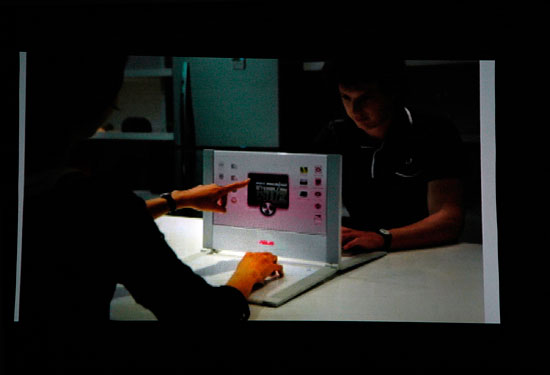
ASUS also demonstrated a prototype notebook with a 4.7" LCD touchpad running off a separate system-on-a-chip, more specifically, NVIDIA's Tegra APX. The Tegra APX is a combination of an ARM11 core with additional support for high definition video decode, a 3D accelerator core, image processor for webcams and a display output.
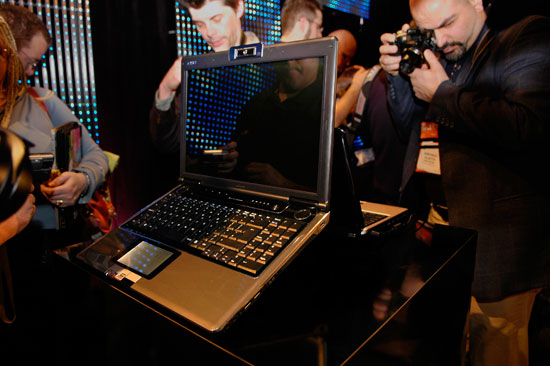
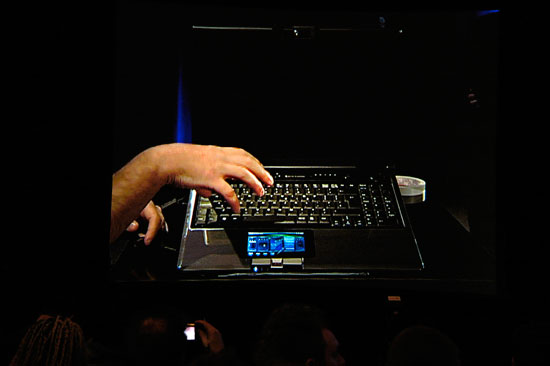
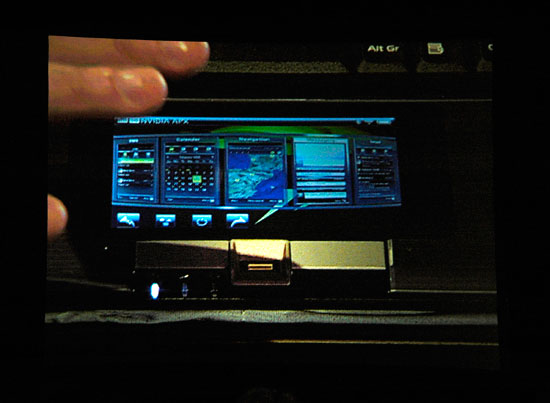
The main display could run either a regular OS off a separate Intel Atom processor, or you could skip that and use the system-on-a-chip with its embedded OS. The benefit for the latter is that battery life should be exceptional; ASUS claimed up to 12 hours of battery life while viewing videos, so you could use the touchpad to browse through your video library and then queue up several videos to watch on the main display, all without ever powering up the Intel Atom with its accompanying motherboard, memory, etc. The Tegra SOC uses the notebook's main battery, thus it benefits from very long battery life. Most ARM11 based devices have much smaller batteries since they have to be in far more portable enclosures.
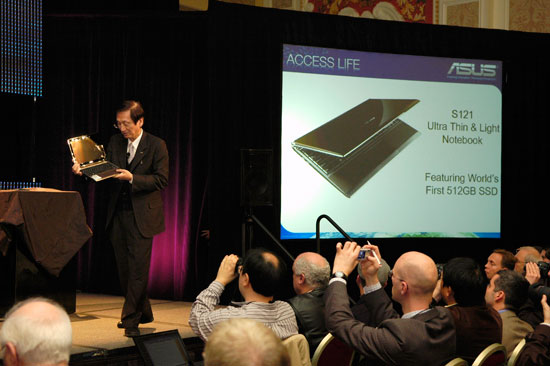
ASUS showed off the S121 notebook. Based on Intel’s Atom, the S121 isn’t exactly fast but it is portable. The S121 carries a much more conventional notebook form factor, measuring 11.7” x 8.3” with a thickness of 0.9” - 1.0”.
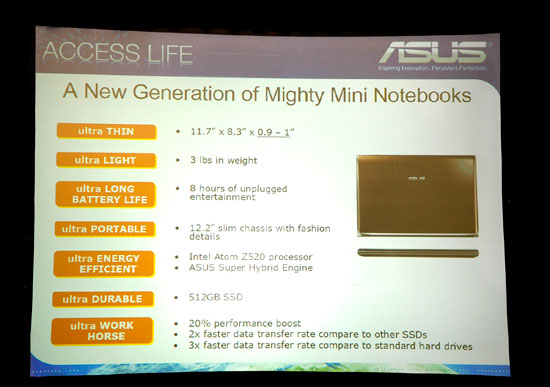
The most unique feature of the S121 (just being thin, light and running Atom isn’t enough anymore) is its 512GB SSD. It sounds like ASUS assembled its own drive in the machine, unfortunately utilizing a JMicron SATA-to-Flash controller - although I didn’t get confirmation on which model in particular it used.
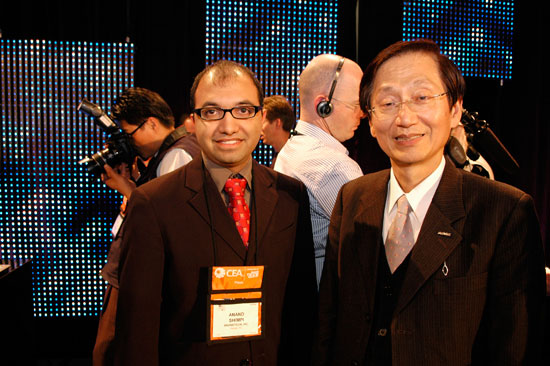
ASUS will certainly have plenty of other products, the last item we wanted to mention for now was a demonstration of a new N20 laptop. This is sort of based on the N10JC that recently received our Gold Editors' Choice Award, only in a larger 12.1" chassis. New additions include a touch sensitive display, an optical drive, and a Core 2 Duo processor. Hopefully they can still keep the good battery life that we witnessed with the N10JC, although with all the upgrades that might be pushing things a little. We're still interested in seeing an N10 or Eee PC netbook with a dual-core Intel Atom processor; a less expensive N20 laptop with such a CPU would also be a nice option.
Today is full of press conferences so we're off to see what else is new at CES 2009. Stay tuned.







